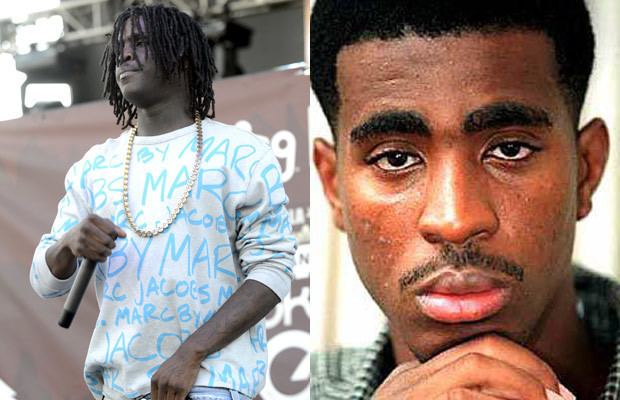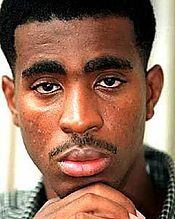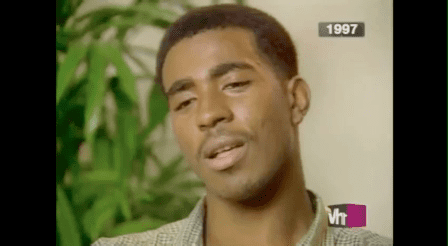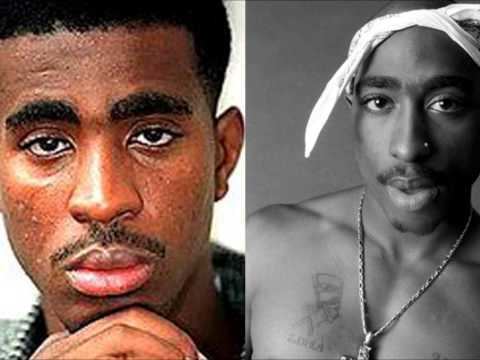Name Orlando Anderson | ||
 | ||
Full Name Orlando Tive Anderson Similar People Greg Kading, Sanyika Shakur, Suge Knight, Mopreme Shakur, Yaki Kadafi | ||
orlando anderson was a pawn mopreme shakur on the murder of tupac shakur
Orlando Tive "Baby Lane" Anderson (August 13, 1974 – May 29, 1998) was an alleged affiliate of the South Side Crips and murderer of rapper Tupac Shakur by the Compton and Las Vegas Metropolitan police departments. Detective Tim Brennan of Compton filed an affidavit naming Anderson as a suspect, although fans and others have speculated as to Anderson's involvement since the killing. He was never charged with the murder.
Contents
- orlando anderson was a pawn mopreme shakur on the murder of tupac shakur
- 2pac shakur was killed by orlando anderson proof
- Murder of Tupac Shakur
- Tupac Shakurs death and aftermath
- Death
- References

2pac shakur was killed by orlando anderson proof
Murder of Tupac Shakur

In 2002, The Los Angeles Times published a two-part series by reporter Chuck Philips titled "Tupac Shakur planned to kill Snoop Dogg?" based on a series that looked into the events leading to the crime. The series indicated that "the shooting was carried out by a Compton gang called the Southside Crips to avenge the beating of one of its members by Shakur a few hours earlier. Orlando Anderson, the Crip whom Shakur had attacked, fired the fatal shots. Las Vegas police interviewed Anderson only once as a possible suspect. He was later killed in an unrelated gang shooting." The L.A. Times articles included reference to the cooperation of East Coast rappers including the late rapper The Notorious B.I.G., Tupac's rival at the time, and New York criminals.

Before they died, the late rapper The Notorious B.I.G. (who was killed on March 9, 1997) and Anderson denied a role in the murder. In support of that, Biggie's family produced computerized invoices showing that he was working in a New York recording studio the night of the drive-by shooting. His manager Wayne Barrow and fellow rapper James "Lil' Cease" Lloyd made public announcements denying Biggie had a role in the crime and stating that they were both with him in the recording studio on the night of the shooting. The New York Times called the evidence produced by Biggie's family "inconclusive" noting:

The pages purport to be three computer printouts from Daddy's House, indicating that Wallace was in the studio recording a song called Nasty Boy on the afternoon Shakur was shot. They indicate that Wallace wrote half the session, was In and out/sat around and laid down a ref, shorthand for a reference vocal, the equivalent of a first take. But nothing indicates when the documents were created. And Louis Alfred, the recording engineer listed on the sheets, said in an interview that he remembered recording the song with Wallace in a late-night session, not during the day. He could not recall the date of the session but said it was likely not the night Shakur was shot. We would have heard about it, Mr. Alfred said."

Assistant Managing Editor of the LA Times Mark Duvoisin defended Philips' articles, stating they were based on police affidavits and court documents as well as interviews with investigators, witnesses to the crime and members of the Southside Crips. Duvoisin stated: "Philips' story has withstood all challenges to its accuracy, ...[and] remains the definitive account of the Shakur slaying." The main thrust of Philips' articles, implicating Anderson and the Crips, was later corroborated by former LAPD Detective Greg Kading's 2011 book Murder Rap and discussed in author Cathy Scott's book The Killing of Tupac Shakur. She debunked the theory in a People magazine article, saying there was no evidence pointing to Biggie Smalls as a suspect. Also, The New York Times wrote, " The Los Angeles Times articles did not offer any documentation to show that Wallace was in Las Vegas that night."
In her 2002 book (with a new edition in 2014), The Killing of Tupac Shakur, Cathy Scott reviews various theories, including the Suge Knight/Death Row theory of Tupac's murder before stating, "Years after the primary investigations, it's still anyone's guess. No one was ever arrested but no one was ever ruled out as a suspect, either." She then wrote that one theory "transcends all the others, and implicates the white-record-company power brokers themselves," implicating the bosses of the Suge Knight label. In recent years, archived letters of her responses to readers show an evolution toward Anderson as a suspect and a dismissal of the Knight theory.
Tupac Shakur's death and aftermath
On the night of September 7, 1996, Shakur, his entourage and Anderson were involved in a fight inside the MGM Grand Hotel in Las Vegas three hours before Shakur's shooting. In October, Las Vegas homicide Lt. Larry Spinosa told the media, "At this point, Orlando Anderson is not a suspect in the shooting of Tupac Shakur." Eventually in the investigation, Anderson was named a suspect. Stories circulated on the street that Anderson bragged about shooting the rapper, which he denied in an interview for VIBE magazine later. Anderson was detained in Compton a month after the shooting with 21 other alleged gang members. Anderson was not charged. However, the raid was only tangentially connected to the Tupac shooting as Compton police said they were investigating local shootings and not the one in Las Vegas. The Las Vegas police discounted Anderson as a suspect, according to a Los Angeles Times article, because the fight occurred just hours before the shooting, in which Shakur was involved in beating Orlando Anderson in the Las Vegas MGM lobby; they failed to follow up with a member of Shakur's entourage who witnessed the shooting who told Vegas police he could identify one or more of the assailants—the witness (rapper Yaki Kadafi) was killed two months later, and they failed to follow up a lead from a witness who spotted a white Cadillac similar to the car from which the fatal shots were fired and from which the shooters escaped.
A year later, Afeni Shakur, the mother of Tupac Shakur, initiated a wrongful death legal action against Orlando Anderson. This was in retaliation to a lawsuit that Anderson had filed against Suge Knight, the CEO of Death Row Records, associates of Death Row, and the estate of Tupac Shakur. Anderson's legal claim demanded compensation for injuries he alleged to have sustained during the altercation on the night in question, including both emotional and physical suffering. Shakur's lawsuit was lodged merely four days following Anderson's filing. In 2000, The Associated Press reported that the estates of Shakur and Anderson reached a settlement in their respective lawsuits just hours prior to Orlando Anderson's death. Only Anderson's lawyer disclosed a dollar figure attached to the settlement which he claimed would have netted Anderson $78,000.
In 1997 Anderson told the Los Angeles Times he was a fan of Tupac Shakur and his music, and denied the murder.
Former LAPD Detective Greg Kading in October 2011, a former investigator in the murder of Christopher "Biggie Smalls" Wallace, released a book alleging that Sean "Diddy" Combs commissioned Duane Keith "Keffe D" Davis to kill Tupac Shakur, along with Knight, for $1 million. Davis, the uncle of Orlando Anderson, and Kading claimed that Anderson was present in the vehicle which pulled up next to the BMW in which Tupac was shot. In a recorded conversation with Detective Kading, Davis claimed Anderson fired the shots that killed Tupac.
Kading's implication of Anderson was similar to Philips' series and Scott's book. Each account said that four black men were in the white Cadillac that pulled up alongside the BMW that Knight and Tupac were riding in on the night of the shooting. The accounts independently reported that Anderson was in the back seat of the Cadillac and shot Tupac by leaning out of the back window. Kading and Philips' claimed that the Crips were offered a one-million dollar bounty to kill Knight and Tupac. However, both accounts differ on whether the bounty was offered by Combs (as reported by Kading) or by Wallace (as reported by Phillips).
Death
On May 29, 1998, Orlando Anderson and associate Michael Reed Dorrough were involved in a shootout with gang members, Michael Stone and Jerry Stone, outside of Cigs Record Store in Compton, California. Anderson and both Stones later died at Martin Luther King Jr.-Harbor Hospital (formerly King/Drew Medical Center) in Los Angeles, California. Dorrough was later charged for his involvement in the shootout.
